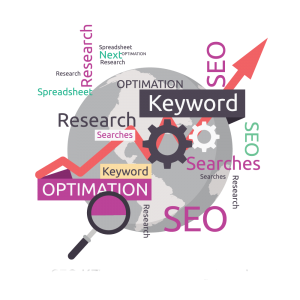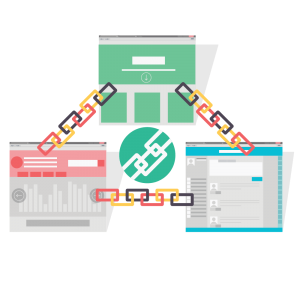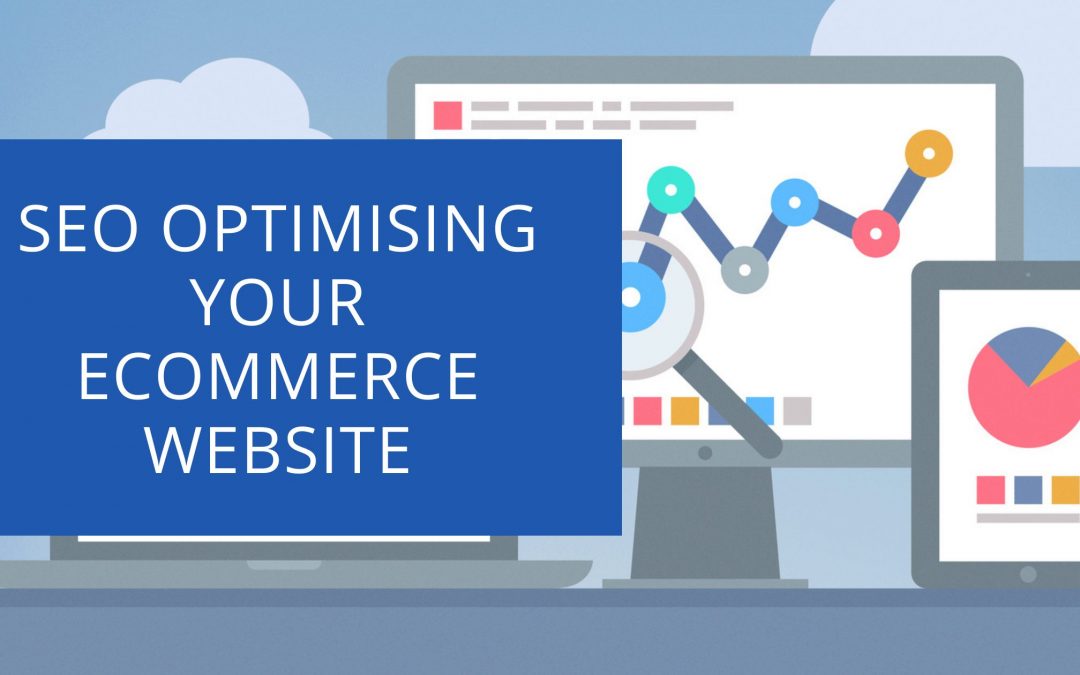The modern eCommerce landscape is a competitive one. Whether you’re looking to take over the market in your city or across the world, your website must rank highly on Google and other major search engines.
With so many different strategies available, how do you know which will work best for your business? We’ve compiled 12 tips from our tried and test strategies to help you optimise your eCommerce site and generate more revenue!
Contents
12 eCommerce SEO Tips
1. Speed Optimisation
One of the most important factors for ranking your eCommerce website is site speed. Customers are impatient and will leave your page if it doesn’t load quickly enough. Use a tool such as GTMetrix to analyse your website’s speed and make changes where necessary.
2. Use SSL
Enabling SSL for your website is a must-do in today’s SEO landscape. Not only does it ensure that all communication between your site and customers is encrypted, but it also gives you a ranking boost on Google.
3. Keyword Research
 Before you start optimising your website, you need to do some keyword research. This will help you determine which keywords are most relevant to your business and how best to target them.
Before you start optimising your website, you need to do some keyword research. This will help you determine which keywords are most relevant to your business and how best to target them.
A great tool for this is Google’s Keyword Planner.
You can also use competitor analysis tools such as SEMrush and Ahrefs to see what keywords they’re targeting and how successful they’ve been in ranking for them.
Once you’ve determined which keywords you want to rank for, it’s time to start incorporating them into your site!
4. Optimise for Search Intent
There are the types of search queries:
- Navigational: This type of query is when the user knows what they are looking for and wants to navigate to that page or website.
- Informational: The user is looking for information.
- Transactional: The user is looking to make a purchase.
Generally, transactional searches are the most important keywords to target for eCommerce websites.
Examples of transactional search queries are:
- buy iPhone
- order running shoes
- refurbished laptop
These types of keywords should be targeted on your category and product pages. But, informational searches shouldn’t be ignored, depending on the ranking strategies required you may have to use information searches to bring traffic to your website and boost your eCommerce pages with internal links.
5. Create Descriptive Category and Product Descriptions
When people are looking to make a purchase, they will often search by product category or specific product names. This is why it’s important to have well-optimised category and product description pages.
Include your target keywords in your titles, descriptions, and H tags, and make sure the content is informative and engaging.
6. Fix user experience issues
A great user experience is vital for eCommerce sites. Not only does it make the shopping process more enjoyable, but you’ll also see an increase in conversions and sales if your site ranks highly on Google.
You can improve your UX with these handy tips:
- Make sure that your pages load quickly (see above).
- Ensure all forms are functioning correctly (e.g., search bars).
- Make mobile navigation easy by using a responsive design template.
- Use effective internal links to guide customers through the checkout process
- Incorporate social sharing buttons so users can easily share their products online
7. High-Quality Link Building
 While link building can be challenging for eCommerce websites because they are often seen as “low value”, there are still ways to generate quality backlinks without spending all day on outreach campaigns!
While link building can be challenging for eCommerce websites because they are often seen as “low value”, there are still ways to generate quality backlinks without spending all day on outreach campaigns!
For example: where we mentioned not to ignore informational searches above, you can create informational content that can attract links or you can use it for outreach.
So in turn, you use the informational content to link to your product and category pages, then any links built to the information content get passed on to those product and category pages thus boosting their rankings even more!
8. URL structure
A well-structured URL is important for both usability and SEO. It should be easy to read and include the target keywords for the page.
For eCommerce websites, it’s best to use a category structure in your URLs rather than individual product pages. This makes it easier for users to find what they’re looking for, and it also allows you to target more long-tail keywords.
You can also use subcategories in your URLs if needed. For example:
/category/subcategory/product-name
/category/subcategory/brand-name/product-name
This type of URL structure is beneficial because it allows you to rank for multiple variations of a keyword (e.g., shoes and footwear) rather than just one keyword.
And with the right URL structure, it can help distribute the power of inbound links coming to your site.
9. Optimise Your Images
Make sure that your image alt tags are descriptive and include keywords relevant to the product or page they’re on. This will improve their SEO.
Ensure your images are optimised for speed by compressing them and/or using a CDN.
Also known as the “Three Kings” you should ensure your title tag, meta description and h1 tag are optimised (with the right search intent).
For eCommerce websites, it’s best to use a title tag that’s 60 characters or less and includes the target keyword.
The meta description should be around 160-170 characters long and include the target keywords as well as a call to action. And finally, your h1 tag should only include the target keyword or a close variation.
11. Conversion Rate Optimisation
Here are 10 Ways to Increase Conversion Rates on Your Site
1. Offer discounts and coupons
One of the easiest ways to increase your conversion rate is to offer discounts and coupons to your customers. This gives them an incentive to buy, and it also helps to build customer loyalty.
2. Use effective visuals
Visuals are a powerful tool for increasing your conversion rate. Use high-quality images that are relevant to your products, and make sure they’re easy to view on all devices.
3. Make the checkout process easy
 The checkout process should be quick and easy to navigate. Make sure all fields are required, and use a secure payment gateway.
The checkout process should be quick and easy to navigate. Make sure all fields are required, and use a secure payment gateway.
4. Use attractive headlines
Your headlines should be catchy and persuasive, and they should accurately reflect the content of the page. This will help to increase your conversion rate and keep customers on the site.
5. Internal Links
Use effective internal links to guide customers through the checkout process as well passing relevance and authority throughout your website.
6. Use customer reviews
Customer reviews are a powerful tool for increasing your conversion rate. They help to build trust and encourage customers to buy.
7. Use persuasive content
Content marketing is a great way to build trust with your customers and increase conversions.
8. Obvious Call to Actions
Call to actions (CTAs) are important because they encourage website visitors to take action. They help to guide customers through the checkout process, and they also help to increase conversions by persuading customers to buy.
CTAs should be clear and concise, and they should accurately reflect the content of the page.
9. Analytics & Tracking Track Your Visitors’ Activity on the Site With Google Tag Manager
Google tag manager allows you to track all of your site’s traffic easily, it also makes updating tags and codes quick and simple! So if something doesn’t look right on mobile or tablet devices, for example, you can fix it in real-time without having to upload any new code changes.
10. Mobile Optimisation
Mobile optimisation is important for a couple of reasons. Firstly, it ensures your site looks great on all devices and works well with mobile-specific features such as GPS and camera functions. Secondly, Google has said that having a mobile-optimised website will affect your page ranking in their search results!
12. Use Reviews and Testimonials
Testimonials and reviews can be persuasive, so use them to help increase conversions. If you’ve received good feedback from customers then share it! You could also ask for customer testimonials or product reviews which will further aid the conversion process.
eCommerce SEO FAQ
What is eCommerce SEO?
eCommerce SEO is the practice of optimising a website to sell products and services online. This includes improving site visibility in search engine results pages (SERPs), increasing traffic from organic search, and earning links and social media shares from across the web. eCommerce SEO can be used to improve any kind of online store, including those running on Shopify, Magento, WooCommerce, and more.
How can I improve my eCommerce SEO?
There are several ways that you can improve your eCommerce SEO. Firstly, make sure that your website is optimised for search engines. This includes using the correct keywords and tags and ensuring that all content is high-quality and relevant to your products.
You can also increase traffic from organic search by creating valuable content that people will want to share online.
Additionally, eCommerce experts recommend to use effective marketing techniques such as social media advertising and email marketing to drive traffic to your site. Finally, make sure that your website is easy to navigate and use clear and persuasive calls to action to encourage customers to buy.
What are the best keywords for eCommerce SEO?
 Transaction search queries are the best keywords to target with eCommerce stores but other types of queries shouldn’t be ignored because they can still drive a significant amount of traffic to your site and the content required to target the search intent can play into other strategies to rank your eCommerce store.
Transaction search queries are the best keywords to target with eCommerce stores but other types of queries shouldn’t be ignored because they can still drive a significant amount of traffic to your site and the content required to target the search intent can play into other strategies to rank your eCommerce store.
How do I track my eCommerce SEO progress?
There are many tools available to track your eCommerce SEO progress. This includes Google Analytics which will show you how much traffic is coming from search engines and SEMrush or Ahrefs for tracking the keywords that send the most organic traffic to your site.
What are some common eCommerce SEO mistakes?
One of the most common eCommerce SEO mistakes is not optimising for mobile devices. Another mistake is neglecting to create valuable content that people will want to share online. Additionally, using the wrong keywords or tagging incorrect information can also hurt your site’s visibility on search results pages.
What is the difference between general SEO and eCommerce SEO?
General SEO is more concerned with improving a site’s visibility in search engine results pages while eCommerce SEO focuses on increasing the number of visitors that end up purchasing products or services. Additionally, general SEO can be used to improve traffic for any kind of website while eCommerce requires an online store that sells products and services.
Why is eCommerce SEO important?
eCommerce SEO is important because it can help increase traffic and sales from organic search. Additionally, eCommerce SEO can help improve the visibility of a website in SERPs and drive more customers to purchase products or services online.
We Offer SEO Services For All Platforms
- Shopify: https://mediakynect.co.uk/shopify-seo/
- Squarespace: https://mediakynect.co.uk/squarespace-seo/
- WordPress: https://mediakynect.co.uk/wordpress-seo/
- WooCommerce: https://mediakynect.co.uk/woocommerce-seo/
- Weebly: https://mediakynect.co.uk/weebly-seo/
Conclusion
Ecommerce SEO is a great way to increase traffic from organic search and improve the visibility of your website in SERPs. By following these 12 tips, you can make sure that you are doing everything possible to sell products or services online!

